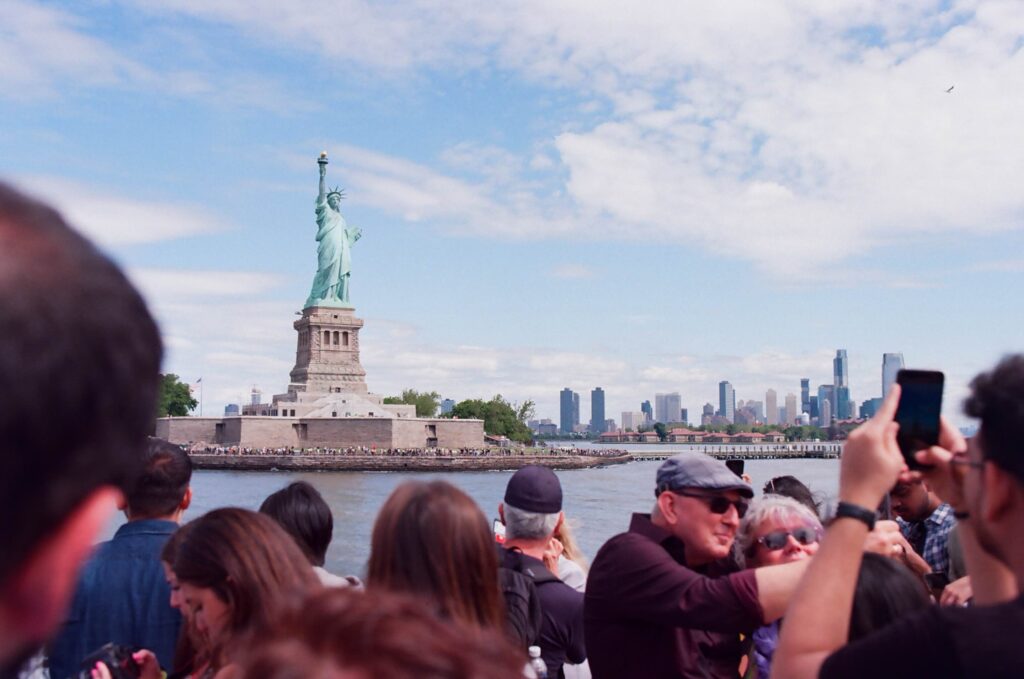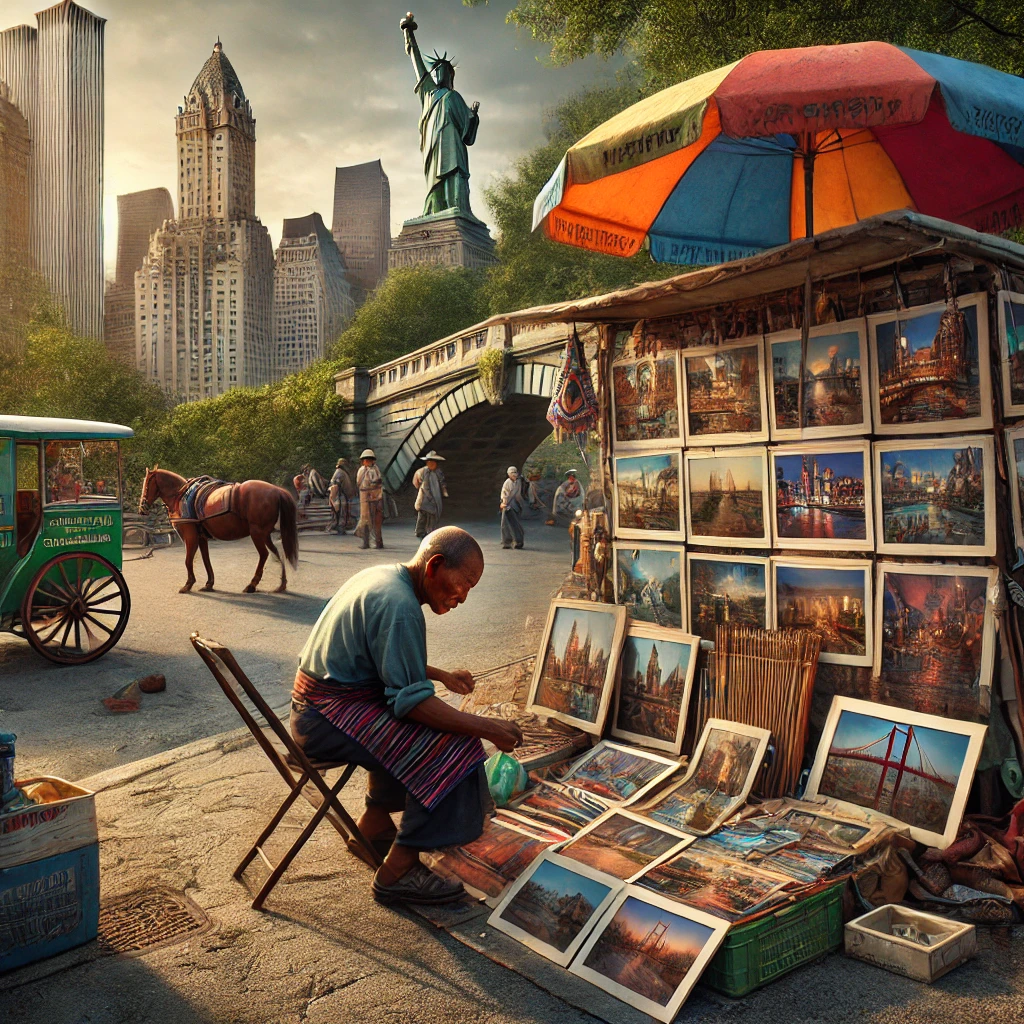I was roaming on the street in New York City. People hustle, hurrying from one destination to another. Yet Tianzin and his father have already arrived at their sole destination—the United States of America, yet it has not been what they imagined.
At the plaza that joins Columbus Circle and an entrance to Central Park, vendors of all kinds set up their stalls. Mexican food trucks selling tacos, stablemen soliciting tourists, and jazz trios playing enchantedly. Among them, a brown-colored, middle-age-looking man was tidying up the stall. He sells photographs of New York’s scenic spots: the Brooklyn Bridge, the Statue of Liberty, Times Square, and the Empire State Building. The photos are expressive in color. For instance, the Brooklyn Bridge photo was taken at dawn, creating a misty aura around the bridge. Yet these prospering scenic spots contrast with their shabby stall that sits under broad daylight right beside the road.

“My name is Tinzin. T-I-N-Z-I-N.”
“Your name is not common. Where are you from?”
“I’m from Tibet.”
Tibet is a familiar yet alien name to me. In case you don’t know. Tibet was integrated into the People’s Republic of China as a province in 1950. Prior to that, Tibet was under the administration of various Chinese dynasties with limited autonomy (for Yuan, Ming, and Qing).
“How did you end up here?” I asked him.
“Technically, I was born in Nepal. My father left Tibet way before I was born”
In 1959 during the Tibetan riot. Dalai Lama, Tibetans’ political and spiritual leader, fled to India. Following him, thousands of Tibetans fled from their homeland to India and Nepal primarily.
His father was lying on a sling chair behind the stall under a scruffy umbrella that shielded him from the heating sun. I walked toward him and asked politely if I could interview him. He scrambled to his feet and asked if I wanted a photograph in shoddy English. “Ten dolla for small foto. Fifteen for big foto.”

“He does not speak English that well,” Tinzin spoke and tried to explain the situation to his father in Tibetan. His father hastily refused me under confusion. I was also told that I had to go back to the campus. So, I hurriedly told Tinzin that I would come back to them another day. It’s been nice to meet you, please help me to explain to your father that I would like to interview him.
Two days later, I went back to Columbus Circle. I greeted Tinzin.
“My father wasn’t aware of the situation before he said ‘no’ to you last time. I’m really sorry about that”
“That’s alright. Do you mind if I interview him now?” I asked.
“Not at all.”
I pulled out my phone where I stored all the questions I prepared. I translated the questions into Tibetan over the two days. Then I introduced myself to Tinzin’s father properly this time. He told me his name—Tsewangdorjee. He has a swarthy face with wrinkles beside his canthus. I showed him the translated questions one by one, such as “What drove you to leave India and come to the U.S.?” “Were you pursuing anything specific in the U.S.?” and “What kind of difficulties did you encounter as a Tibetan living in the U.S.?”
“I left India in 2009. I come to the U.S. because of my wife.”
“Were you pursuing anything specific?” I asked.
“No, I only come here because my wife wants to.”
“Only because of my wife.” This question intrigued me. I moved on to ask him more questions. Tinzin was listening beside and adding in his opinions.
“What kind of difficulties did you guys encounter in the U.S. as Tibetans? Or what are something that you wish you knew before coming to the U.S.?”
“Random people in New York just incessantly assume you are Spanish and speak their language.” Tinzin points out, “They shout at you and tell you to ‘go back to your country.’”
“Like what Tinzin said. Some people are so hostile to the extent that we need to keep an eye on everyone we encounter.” Tsewangdorjee explains.
He then continues, telling me that they are not really obsessed with accumulating material wealth here in the U.S. “We just want to live a satisfied life and find some inner peace and communities in life.” Clearly, he saw where was the questions leading to. Then he started a whole conversation on the use of Credit Card. He claims how Credit Card subtly corrupts your ethics. “Swipe, swipe, swipe all the time. And when you swipe your credit card, you are not aware of how much money you’re spending. This is a materialistic trap.” To a certain degree, I agree with him on that. He then talked to me about Buddhism and the Dalai Lama in fervor after I told him I studied Heart Sutra and Tibetan history before. He pulls out his phone to show me the pictures of him back in India. There are cracks all over his phone’s screen.
“So do you guys have any future plans?” I asked them both.
“We might go back to India.” He said in a firm tone. Tinzin nodded slightly. His nod was subtle to the degree that you can’t really tell he was nodding. He fell into silence.
I purchased one of their photographs and asked for a selfie and signatures when I left. It seems like their journey — across generations and continents — is turning its way back…

By – EW
